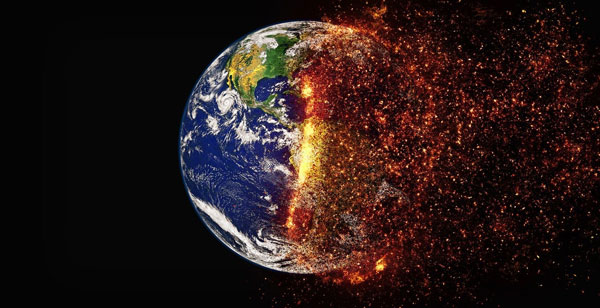Heatwaves killing more people than ever

[Photo Credit to pixabay]
Extreme heat waves have taken more than 200 lives in India, South Korea, Japan, along with Mexico which had the highest recorded heat and humidity this summer; many people have been affected as the last two weeks were the Earth’s hottest on record since 1979 since July 17th, 2023.
According to data from the Centers for Disease Control and Prevention, there are around 700 heat-related deaths annually.
The heat waves in 2023 were the hottest recorded, which is constantly increasing.
Extreme heat is dangerous for everyone; it starts with small symptoms of having small blisters to fainting, and in extreme cases, if the body temperature rises until 39°C, it may lead to head stroke causing organs to swell, and to die.
In fact, according to the U.S., heat waves kill more people annually than hurricanes, lightning, tornadoes, floods, and earthquakes combined.
Heatwaves have an immense impact on innumerable fields like reducing air quality, worsening drought, increasing the risk of wildfires, etc.
They are frequently associated with air stagnation, speeding up the dispersion of pollutants in the lower atmosphere, leading to significant deterioration of air quality.
Additionally, looking from the far-reaching effects of extreme heat, China is becoming more addicted to coal in order to use air conditioning during these supreme heat waves more than ever.
Travelers to Europe, such as Italy, Spain and Greece had to take precautionary measures in order to protect themselves in the sweltering weather.
Across the globe, days are getting hotter and more frequent; over the past decade, daily record high temperatures have occurred twice as often, up from a near 1:1 ratio in the 1950s.
It is evidently confirmed that these heat waves result from dynamic climate changes, as it leads to global warming and makes the earth’s atmosphere hotter in general.
The major cause for global warming is the existence of greenhouse gasses.
A generally known example of how Greenhouse gasses occur is when people burn coal or fossil fuels in order to achieve energy- and as a result huge amounts of carbon dioxide is discharged and disseminated throughout the atmosphere.
These gasses caused by carbon dioxide do the role of trapping the Sun’s heat in the Earth’s atmosphere, leading to heat rapidly amassing and causing global warming.
Not only burning coal, but deforestation and increasing livestock farming also affects heavily on the production of carbon emissions; as deforestation leads to the reduction of trees which absorb carbon dioxide and livestocks such as cows and sheep produce large amounts of methane when digesting their food.
Countries and governments are reacting to these problems and introducing a solution by trying to find different forms of energy, working on renewable energy techniques such as wind power, hydropower, geothermal energy, solar energy, biomass energy, etc.
In order to adapt to this crisis, cities and countries are finding their own way of responding to these immense heat waves.
They do things such as developing a heatwave response plan to prevent the effect of future heat waves, ensuring the system of cities getting a temperature forecast, and building capacity among health-care professionals.
In addition to this, countries might work on a project restoring the broken ecosystem - as a single tree produces a cooling effect equivalent to two domestic air conditioners running for 24 hours.
Moreover, cities could build infrastructures that are resilient to climate like spatial planning frameworks such as vulnerability maps, and ensuring the private sector is aware of climate risks, projections and uncertainties.

- Esther Lee / Year 8
- North London Collegiate School Jeju

![THE HERALD STUDENT REPORTERS [US]](/assets/images/logo_student_us.png)
![THE HERALD STUDENT REPORTERS [Canada]](/assets/images/logo_student_ca.png)
